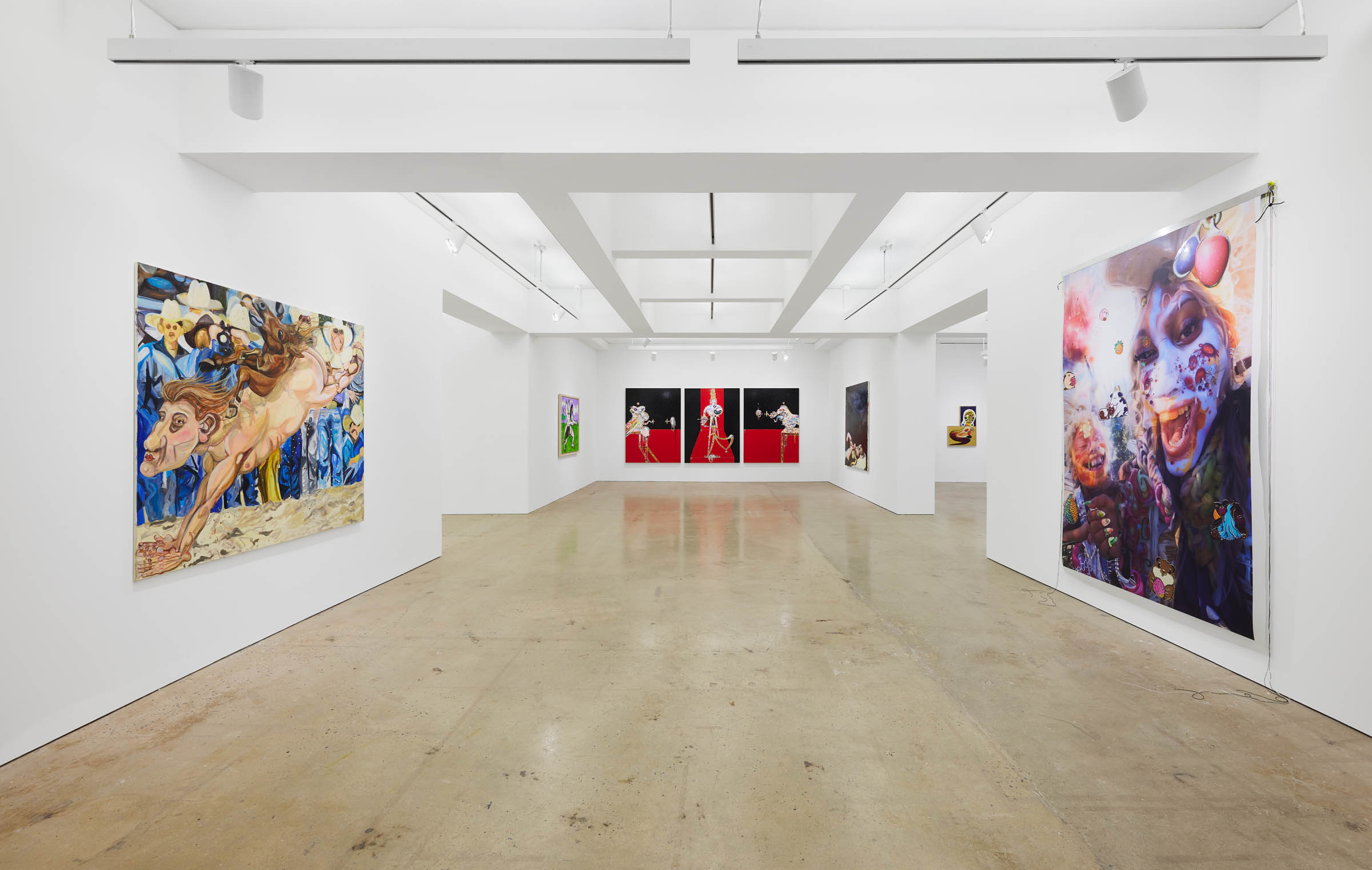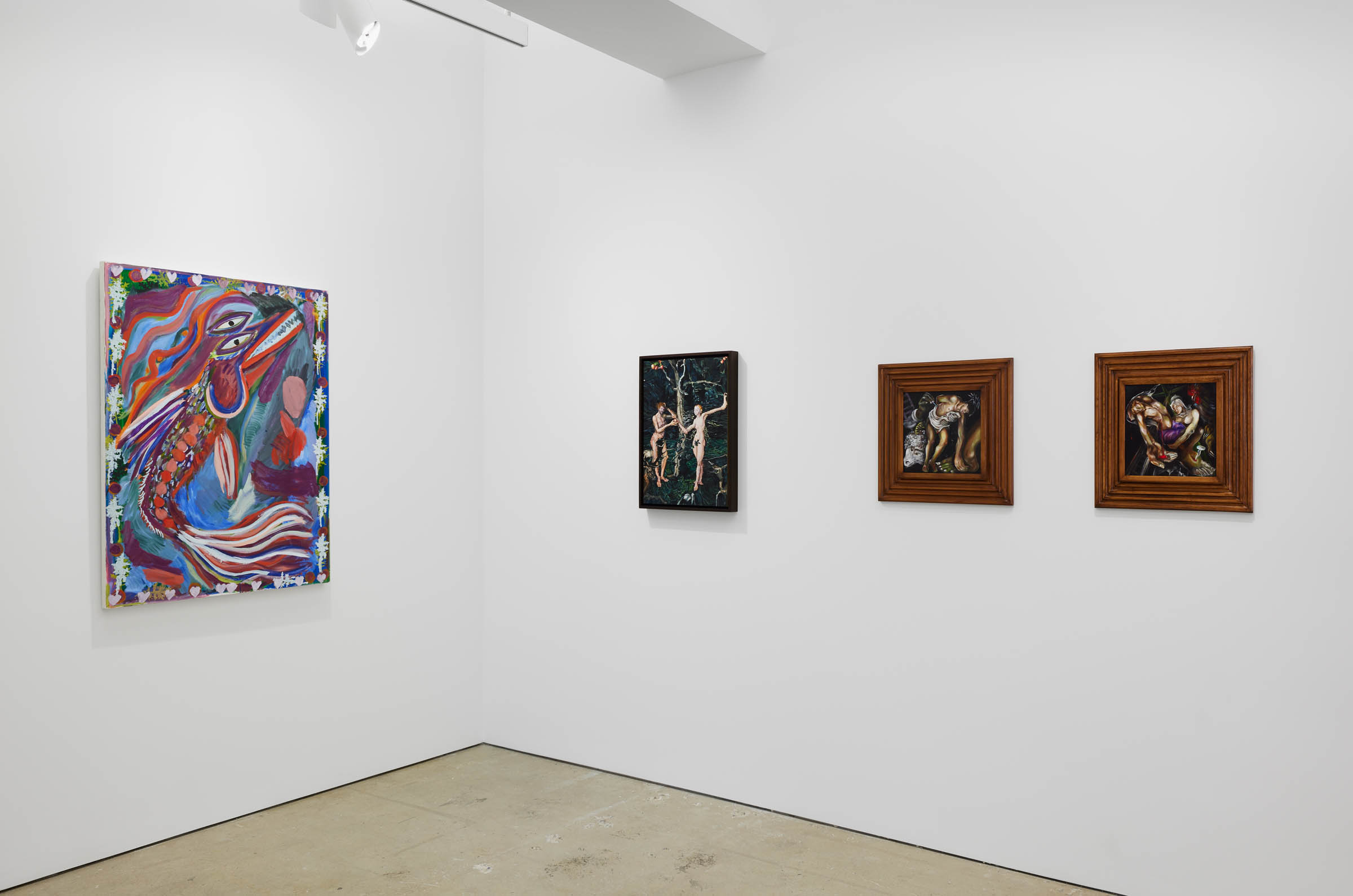


















Nahmad Contemporary
June 26 - September 16, 2023
NEW YORK—Nahmad Contemporary is pleased to present Ugly Painting, an exhibition organized by Eleanor Cayre and Dean Kissick on view June 26 through August 26, 2023. This exhibition is a celebration of the pleasures of “ugly painting,” by which we mean figurative painting that makes deliberate use of grotesque, garish, or abject styles of brushwork, representation, composition, or coloring to form a singular vision. Painting that is bold, confrontational, and confident, rather than pretty, decorative, polite, conservative, or overly realist.
The exhibition presents works by Rita Ackermann (b. 1968), Alex Carver (b. 1984), Guglielmo Castelli (b. 1987), Sedrick Chisom (b. 1989), Theresa Chromati (b. 1992), George Condo (b. 1957), Shuriya Davis (b. 1996), Carroll Dunham (b. 1949), Nicole Eisenman (b. 1965), Jana Euler (b. 1982), Jeremy Glogan (b. 1967), Jamian Juliano- Villani (b. 1987), Karla Kaplun (b. 1993), Izumi Kato (b. 1969), Jared Madere (b. 1986), Mathieu Malouf (b. 1984), Connor Marie (b. 1992), Jannis Marwitz (b. 1985), Takashi Murakami (b. 1962), Richard Prince (b. 1949), Benjamin Reichwald (b. 1994) & Jonas Rönnberg (b. 1990), Daniel Richter (b. 1962), Peter Saul (b. 1934), Josh Smith (b. 1976), Matthew Stone (b. 1982), and Ambera Wellmann (b. 1982) that are, for us, in some way misshapen or unsightly. To say a painting is ugly is not to suggest that it is bad. “Bad painting,” Rachel Wetzler writes in an essay on Euler for Art in America, “approaches the medium as something that can only be pursued ironically, through a posture of carelessness, haste, and disregard”—whereas ugly painting is a choice and a matter of style and control. There are many bad paintings around, but few ugly ones.
Ugliness can be powerful, moving, and even sublime. Many great historical works were considered unpleasant in their time because they broke with convention or simply because they were extremely grotesque. A couple reappear in this show: Carver’s The Painting Flays Itself is a mutilated version of Titian’s The Flaying of Marsyas (ca. 1576), while Murakami’s Homage to Francis Bacon remakes the artist’s Second Version of Triptych 1944 (1988) as superflat psychedelic horror.
We also wish to show that a more expressive paradigm of the figure is emerging. It is not the idealized body of digital representation, nor the realist body of much recent painting, but the wretched, experimental, exploded body: the body in a state of transformation, the body that may be repulsive to itself or others. Our conception of selfhood has changed dramatically over the past decade, and this is a perfect time to find different ways of conceptualizing and representing the human (and inhuman) figure. There is also an idea of a “crisis of representation” (Sam Kriss, on the Our Struggle podcast): if we keep producing realist representations of our everyday lives in art and literature, that tendency will soon be exhausted—and will perhaps explode into a desire for the unknown, for more abnormal, fantastic, or repugnant scenes, for images that are coming apart, for new visions of folklore and myth. How can painting more imaginatively express the feeling of life today—and how can it go beyond that?
Life can be dirty and messy, and that is part of its appeal. Strokes of dissonance and splashes of disgust often make an artwork striking and powerful. We believe playing with aspects of ugliness can lead to higher forms of beauty, because beauty and ugliness are part of the same continuum; they both light up the same corners of the brain.
- Eleanor Cayre and Dean Kissick
Ugly Painting


















